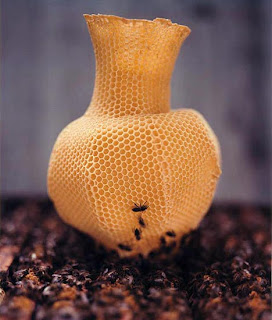Another main attraction is the Notting Hill Carnival, which was started in 1964 by black immigrants mainly from The Caribbean as a form of Cultural Resistance. This carnival is said to be a celebration of anti-racism, the police try to shut it down and intervene. Many of these immigrants faced racism, lack of work opportunities, and poor housing conditions. The carnival was a chance for them to embrace a strong part of their cultural to feel proud of where they came from rather than always feeling suppressed. In present times the carnival has become so huge that about 1.5 million people attend it every year. And approximately £93 million is earned by the UK economy every year due to the carnival.
Notting Hill is also famous for the Notting Hill Race Riots, where activist Claudia Jones stated: " A peoples' art is the genesis of their freedom." I noticed while walking around the streets that the busy roads such as Portobello Road seem to draw artists with alternative life styles, especially towards the end the street. Yet the surrounding neighborhoods are very posh and wealthy. On the weekends the area is swarming with tourists, which make it hard to enjoy. Friday is the best day to visit Portobello Road if pushing through dense crowds is not your thing to do.
 I managed to interview D.J. Alfie who DJs at a local pub on the corner of Tibet and Portobello. He spins funky music that will get your feet moving! Alfie says that Notting Hill used to be a place filled with artists, researching people, and taking photographs (activities we were assigned to do while in our neighborhood). He said that is used to be comprised of artists who appreciate the world, but now since it has become so well known it has lost some of its grit and original charm. He believes "Saturdays is when it is buzzing!" I also spoke with a man who sold beautifully exquisite jewelry from Tibet and Burma. His mother was from Tibet and his father from Burma. He would travel to each country for 6 months at a time and visit the homes of the native craftsmen. Due to his ability to speak both languages he was able to bargain with the locals. He then comes back and sells the jewelry at the market. I also met a man named Alex who is originally from Turkey. He paints traditional Turkish decorations, such as fancy plates and porcelain kittens. He explains that he does not have enough money or objects to start a shop so he just sells them on the street for some extra money.
I managed to interview D.J. Alfie who DJs at a local pub on the corner of Tibet and Portobello. He spins funky music that will get your feet moving! Alfie says that Notting Hill used to be a place filled with artists, researching people, and taking photographs (activities we were assigned to do while in our neighborhood). He said that is used to be comprised of artists who appreciate the world, but now since it has become so well known it has lost some of its grit and original charm. He believes "Saturdays is when it is buzzing!" I also spoke with a man who sold beautifully exquisite jewelry from Tibet and Burma. His mother was from Tibet and his father from Burma. He would travel to each country for 6 months at a time and visit the homes of the native craftsmen. Due to his ability to speak both languages he was able to bargain with the locals. He then comes back and sells the jewelry at the market. I also met a man named Alex who is originally from Turkey. He paints traditional Turkish decorations, such as fancy plates and porcelain kittens. He explains that he does not have enough money or objects to start a shop so he just sells them on the street for some extra money.Object 1.

Magnifying Glass from the Portobello Road Market:
- Lollipop
Circular
Ivory
Enlarge
Magnify
Waste
Old-School
These objects, if taken out of context and put into a gallery could make sense if placed with other objects. Yoko Ono did an installation, where she happened to meet her husband John Lennon. In the installation there was a ladder that led up to a some text and a magnifying glass. When the magnifying glass was put over the text it read- "Yes." I also saw a sculpture at the Firenze Exhibition in Regent's Park and the Sculpture consisted of many magnifying glass that cast abstract yet beautiful shadows onto the wall.
Object 2:

Image of grocery baskets (shopping basket) from a grocery Store in Notting Hill
Metal
Plastic
Ordinary
Colorful
Beautiful
I think this image would be pretty in a gallery. It enlarges by-passed, ordinary objects and show how they are overlooked and beautiful from certain angles.
Object 3:
Barry Griffiths table which is little cubes made of wire and they keep piling on top of each other like a molecular structure which ultimately makes a transparent table, shown at the Flow Gallery.
BlurryFuzzy
Confusing
Static
Transparent
Molecular
Furniture solely made of wire and cubes. The artist states his goal in creating this table: "It is transparent in nature allowing space and light around them." If this table was taken out of context and put into a gallery it would not make sense to people, ordinary people who shop at John Lewis. The table is beautiful yet a bit disfunctional. Typically tables are solid forms which make them functional so the objects we lay on the table won't fall. Yet this table will not prevent small objects such a silver ware or even bits of food from falling through it.


.gif)




 The Made By Bees piece by
The Made By Bees piece by 